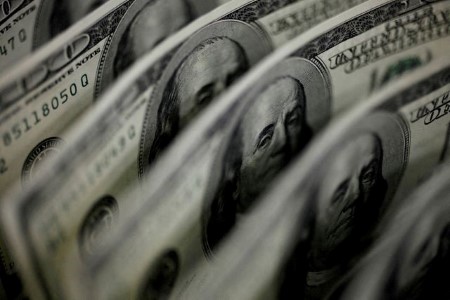




Philippines Trade Update: Trade trajectories trend along
 DOWNLOAD
DOWNLOAD

Policy Rate Updates: Double cut finale
 DOWNLOAD
DOWNLOAD

Monthly Economic Update: One for the road
 DOWNLOAD
DOWNLOAD


US yields rise as political uncertainty offsets disinflation optimism

NEW YORK, July – US Treasury yields reversed earlier declines to trade higher on Friday as uncertainty around the U.S. presidential election as well as the imminent French legislative elections offset an earlier confidence boost from a slowdown in U.S. inflation.
Yields, which move inversely to prices, had declined after a key inflation reading for May showed price pressures cooled in line with expectations, strengthening the case for monetary policy easing to start later this year.
But concerns over the long-term US fiscal and monetary trajectory became the focus during the day, as President Joe Biden’s shaky performance against Republican rival Donald Trump in the first 2024 US presidential debate on Thursday increased speculation about a potential second Trump presidency.
“The debate has relevance because the Trump camp is pro- growth, pro equity markets, pro higher tariffs, which on the longer-term augurs for upward pressure on inflation,” said Padhraic Garvey, regional head of research for the Americas at ING.
Garvey added that while short-term bonds were more directly impacted by the prospect of interest rate cuts this year, longer-dated paper reflected ongoing concerns over rising U.S. debt issuance.
“This is a vulnerability going forward, where we get data optically positive for the rate-cut narrative but the back end starts to think about the longer term,” said Garvey.
Meanwhile, French government bond yields rose on Friday
ahead of Sunday’s first round of a snap election, which polls suggest the France’s far-right movement could win.
The prospect of “populist politics … and probably lack of fiscal restraint” in France may have contributed to the upward move in U.S. yields, with investors not wanting to take long positions in bonds into the voting weekend, said John Velis, Americas macro strategist at BNY.
While political concerns pushed long-term yields higher, Velis said the move back up in shorter-term yields was likely driven by the Chicago purchasing managers’ index (PMI) USCPMI=ECI, which came out much stronger than anticipated, defying the narrative of a sharp economic slowdown.
Earlier in the day the release of personal consumption expenditures (PCE) price index data had increased the chances of a Fed rate cut in September, but later on Friday futures contracts tied to the policy rate implied a 59.5% chance of a quarter-percentage-point cut in September, unchanged from Thursday, CME Group data showed.
Benchmark 10-year yields were last at 4.34%, about five basis points higher than on Thursday. They were 18 basis points lower since the beginning of June and 14 basis points higher since the start of the second quarter.
Two-year yields were roughly unchanged at 4.72% on Friday. They declined by 17 basis points in June but added 10 basis points in the second quarter.
Further out, 30-year yields on Friday added seven basis points to 4.5%, closing the month 15 basis points lower but adding 17 basis points over the quarter.
The spread between two and 10-year yields remained deeply negative but narrowed to minus 38 basis points, its smallest in about a month.
An inversion in that part of the yield curve, which happens when shorter-dated Treasuries yield more than longer-dated ones, is closely watched by investors as it has historically signaled a recession is in the horizon.
Reporting by Davide Barbuscia; Editing by Chizu Nomiyama, Nick Zieminski and Paul Simao
This article originally appeared on reuters.com





 By Reuters
By Reuters